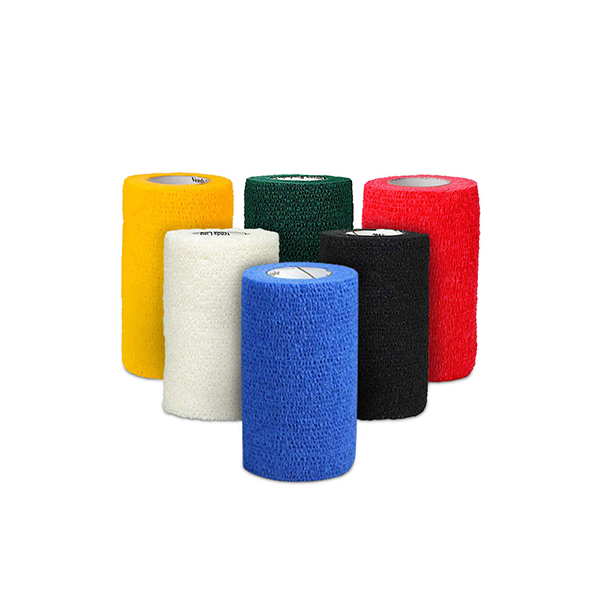“Plan for the best but prepare for the worst.” Wise words to live by as an equestrian! As athletic as they may be, horses are somewhat accident-prone creatures, so it is best to always have a few things on hand, just in case. Whether at home or on the road, you should always keep a Med Box with you, stocked with a few essentials. When you’re first stocking up, consult with your vet to see what recommendations they have for your horse. But here is a list of a few things every equestrian should have available.
The Basics

- A Thermometer – This is one of the first measures taken when you suspect your horse is unwell. Whether you notice a swollen leg, an upset stomach, or you’ve just unloaded after a long haul, a temperature check is first on the list. A temperature outside normal limits can indicate when to call the vet.
- Gloves – Gloves will come in handy for many tasks in dealing with your horse. When cleaning a wound or putting on medicine, always wear gloves to keep the area clean and protect yourself from topicals unsafe for human skin.
- Alcohol – Isopropyl Alcohol is a do-it-all topical that is great to keep on hand. Use wipes or pads to clean and disinfect your equipment, such as your thermometer after you use it. It can also be helpful as a treatment for sore or tired muscles.
- Syringes – Syringes will be the primary tool for administering medications, so always be sure to have a few on hand. A wide-tip syringe can be especially helpful for administering oral medications.
First Aid Supplies

- Betadine – If your horse manages to cut itself (as they often do), use this to clean and disinfect the wound before bandaging. Be sure to completely rinse, however, so there is no skin irritation from soap residue. This Vetericyn Antimicrobial Wound & Skin Cleanser is another option and is especially beneficial for sensitive areas.
- Telfa – These non-adherent gauze pads make bandaging easy, and you don’t have to worry about it sticking to the wound when it’s time to remove it. This is a great first layer to any bandage over the topical ointment or treatment you choose for wound dressing.
- Cotton Roll – Theis is a good multi-use bandage. For larger wounds, you may want to use it as a standing wrap. Or, for smaller wounds, you can simply cut off a piece sized accordingly and cover it with vetrap or elastikon.
- Vetrap – Vetrap must’ve gotten its name because it’s something vets can’t live without. And you shouldn’t live without it either. From bandages large or small to hoof packing and everything in between, Vetrap is essential to have on hand.
- Bandage Scissors – Keep these scissors in your med box so they remain clean. Only use clean scissors to cut your bandage supplies. Bandage scissors are specially shaped so you can easily slide them between the bandage and your horse’s skin without fear of nicking them while you cut it off.
- Wound Cream – Silver Sulfadiazine Cream (commonly referred to as SSD cream for short) is a basic all-wound care cream. It can be used to dress wounds before or after sutures or to treat just a small scratch or skin irritation. For areas that you can’t cover with a bandage, Alushield will offer a protective barrier from dirt, debris, and bacteria for the wound.
- Ophthalmic Gel – Always have an eye ointment for simple situations like dirt, shavings, or other minor contaminants irritating your horse’s eye. These options from Vetericyn or Manna Pro’s Theracyn help clean and provide fast relief and healing when an antibiotic ointment is not necessary.
Emergency Medications

- NSAIDs – Banamine and Phenylbutazone should always be available to help in situations of discomfort. Whether it be lameness or colic symptoms, each of these medications has its place in providing your horse with some relief until the vet can reach you. These are both prescription medications, so always ask your vet about the proper dosage and indications for use before administration.
- Dormosedan Gel – You hope to not need it often, but you should always have a sedative in your med box. It will be useful in any stressful situations when you need your horse to remain calm and still. Always wear gloves when handling this product, and get proper dosage instructions from your vet when prescribed.
- Antibiotics – Although SMZ Tablets have long been the standard antibiotics to keep on hand, many vets are now recommending Uniprim Powder as a better, more easily absorbed option. The powder version can also be easier to dose rather than crushing tablets. Whichever version your vet recommends, be sure to keep on hand for cases of minor cuts, wounds, coughs, abscesses, or other problems at risk for infection. It is often just the first line of defense against bacterial infections, so always consult your vet to be sure a different or stronger antibiotic is not necessary.
And the List Goes On…
The list of items to stock in your Med Box is seemingly endless. As majestic as they are, horses tend to get themselves into peculiar situations, so your stock of first aid items will likely grow over time. This is just a list of necessities to start. As always, consult your vet in any wound, lameness, or stomach discomfort situations to be sure your horse receives the proper treatment and can quickly be on the road to recovery.
Shop Now
You can shop more first aid and med box essentials at FarmVet HERE. Or, shop all our products at FarmVet.com 24/7. You can also call one of our friendly Sales Associates at 1-888-837-3626 or email your order to info@farmvet.com.
Learn More
A common ailment that horses will experience is a hoof abscess. Learn about this predicament and tips for treatment HERE.


2 Pingbacks